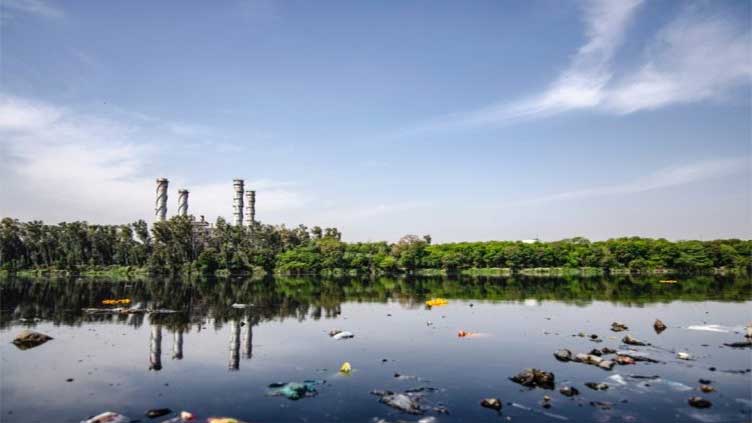Contaminated groundwater becoming injurious for Faisalabadites

Pakistan
Contaminated groundwater becoming injurious for Faisalabadites
FAISALABAD, (APP) - Continuous use of pesticides, outflow of industrial effluent and untreated liquid and solid waste had been contaminating the ground water in the third biggest city of the country posing serious health hazards to citizens.
Known as Manchester of Pakistan and housing nearly five million people, residents of Faisalabad wait for a panacea since years that rescues them from bitter exposure to multiple water borne diseases.
Despite scattered efforts to meet the clean drinking water needs of the citizens, the problem still persists with people exposed to diseases like hepatitis, typhoid, cholera, diarrhea, worm infections, gastroenteritis, dysentery and even cancer.
According to a spokesman of irrigation department, besides other causes, untreated industrial effluent is too dangerous as some industrialist discharge it directly underground through a hole or well.
“By doing this, they apparently save handsome money to be spent on effluent treatment but expose millions of people to ailment,” the spokesman said.
No matter that the city witnessed sizeable industrial growth providing employment to hundreds of thousands people across the district. But, it should have not been at the cost of human health.
“Pumping out groundwater extensively in urban area has also affected the quality of subsoil water in some areas to the extent that it cannot be even used for irrigation purposes,” the spokesman added.
According to a study conducted by the Pakistan Council of Research in Water Resources (PCRWR) a couple of years back, around 59% groundwater in city area was unsafe for drinking.
The samples of surface and groundwater collected from various parts of the city were found contaminated with microbial component besides chloride, fluoride, hardness and TDS. The results showed 36% sodium-bicarbonate, 18% magnesium-bicarbonate, 18% sodium-chloride, 14% calcium-bicarbonate and 9% sodium-sulphate contamination.
The study suggested that the groundwater had both temporary and permanent type of hardness at different sites because 23% samples of Chloride (CI), 23% samples of Iron (Fe), 23% samples of TDS, 18% samples of Nitrate (NQ3), 14% samples of Hardness, 14% samples of total coliforms, 14% samples of E-coli and 9% samples of Floride (F) were found contaminated.
Commenting on this situation, Managing Director Water and Sanitation Agency (WASA) Jabbar Anwar Chaudhry said his agency was endeavoring utmost to address this problem. “Currently, we are providing portable water to residents from Rakh Branch Canal through sedimentation tanks. Our second source is river Chenab.”
“The WASA supplies 56 Million Gallons Daily (MGD) drinking water to residents through these sources. We have also sunk tube wells with the financial help of Japan International Cooperation Agency (JICA) to meet water needs,” he said.
Jabbar Anwar said another chain of tube-wells was sunk along Rakh Branch but due to over sucking, water quality degraded and this facility was discontinued.
“We have also drilled 25 tube-wells along Jhang Branch Canal to provide 20 MGD water. As, still there is supply and demand gap, so we are now embarking on another project with the cooperation of French government to meet water needs,” he informed.
Expanding on all directions at a population growth rate over two percent, the city managers would be on a tight rope in near future to ensure better health facilities, cleaner environment and other amenities for the residents.
As both the deteriorating air quality and water contamination expose people badly to ailment, renowned health expert, Dr Shuja-ud-Din said contaminated water usage make the people suffer from multiple diseases.
“Contaminated water results in diseases like hepatitis, typhoid, cholera, diarrhea, worm infections, gastroenteritis dysentery and even cancer,” he said. “The most common is gastroenteritis that had turned into an epidemic a few years back.”
“We have also witnessed rising number of joint pain patients, caused by intake of heavy metal water. Similarly, sink diseases are also rampant due to use of hard and chemical-mixed water,” he added.
Dr Shuja said as majority of people was ignorant of bad effects of drinking contaminated water, there was also a dire need of raising awareness among the people to save them from water borne diseases.
Although the recent efforts by the public and private sectors had improved water quality to some extent yet more efforts were needed to overcome this challenge.
Social activist, Dr Jaffar Hassan Mubarak has proposed to engage experts from NIAB, NIBGE and AARI for extensive plantation along Paharang and Maddoana drains for containing the volume of chemicals and heavy metals in groundwater.
“At least two new drains must be constructed to flow domestic and industrial effluent to Maddoana and Paharang drains,” he suggested.
Mentioning to already constructed effluent treatment plant near Chakera with a capacity to treat 180 million gallons’ waste water daily, he recommended more treatment plants along Paharang and Maddoana drains to treat waste water making it usable for irrigation.
He urged the government to collect proper aquifer charges from industrial sector and bottled water companies and use this money on establishing treatment plants.
According to WASA statistics, presently 150 water filtration plants are operating in the city but their capacity is quite insufficient to bridge supply and demand gap. Therefore, it is direly needed to start work on Chenab dam as well as use sinking well technique, if admissible to recharge groundwater besides installing more water filtration plants to save people from multiple ailments.


